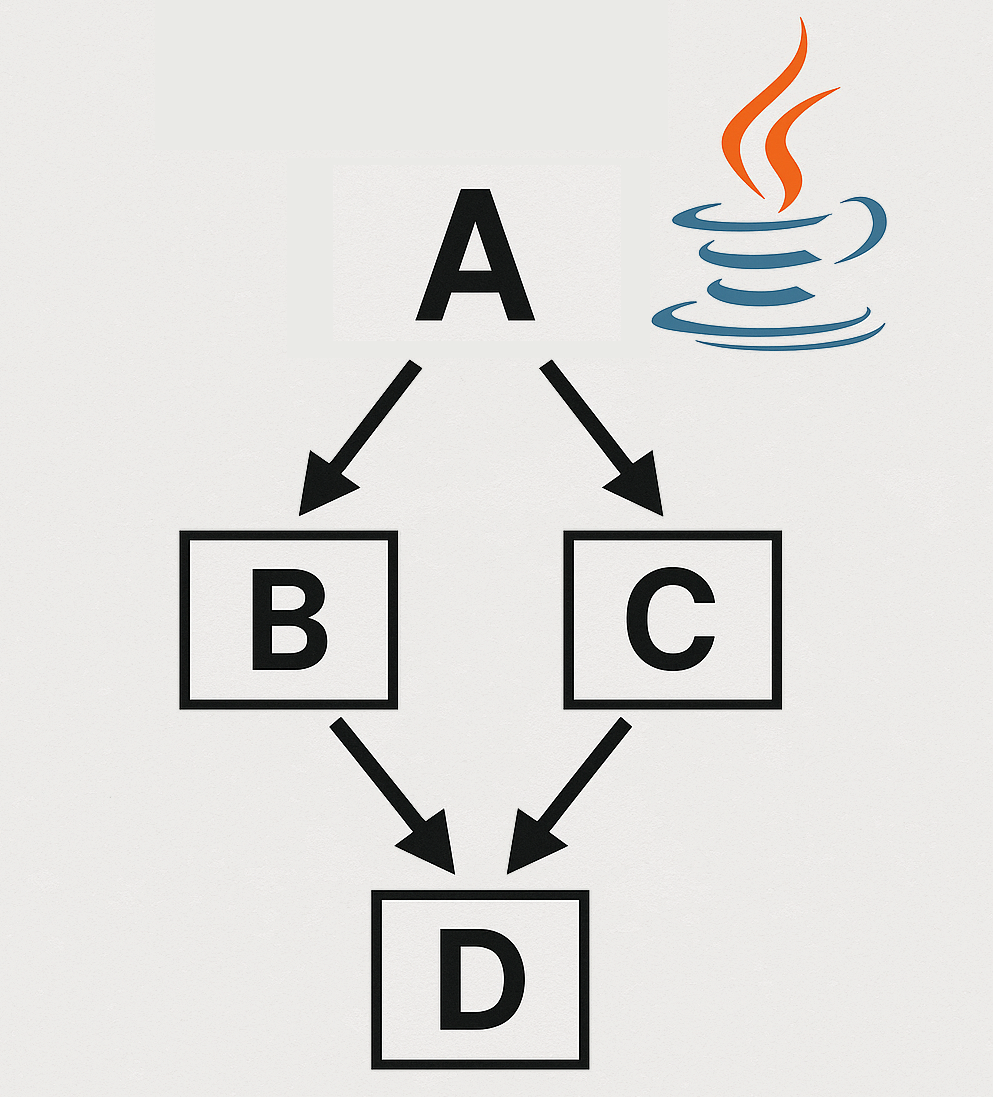What Is the Diamond Problem?
java

What Is the Diamond Problem?
The diamond problem occurs when a class inherits from two classes (or interfaces) that both inherit from the same superclass (or superinterface). This creates a "diamond" shape in the class hierarchy.
Although it's worth noticing this was only a problem introduced since Java 8 when default methods in interfaces were allowed.
🧱 Example in Java (Using Interfaces)
Java doesn't support multiple inheritance with classes, but it does allow multiple inheritance with interfaces.
interface A {
default void greet() {
System.out.println("Hello from A");
}
}
interface B extends A {
default void greet() {
System.out.println("Hello from B");
}
}
interface C extends A {
default void greet() {
System.out.println("Hello from C");
}
}
class D implements B, C {
// Compiler error unless greet() is overridden
public void greet() {
B.super.greet(); // or C.super.greet()
}
}🤯 The Conflict
In the diagram:
A is at the top.
B and C both inherit from A.
D implements both B and C.
Now, when D calls greet(), which version should it inherit? B's or C's? Java doesn't know, so you must override it in D to resolve the ambiguity.
☕️ Why It Matters in Java
Java avoids this problem with classes by disallowing multiple inheritance.
With interfaces, the issue still exists but is explicitly handled by requiring the implementing class to override conflicting default methods.
